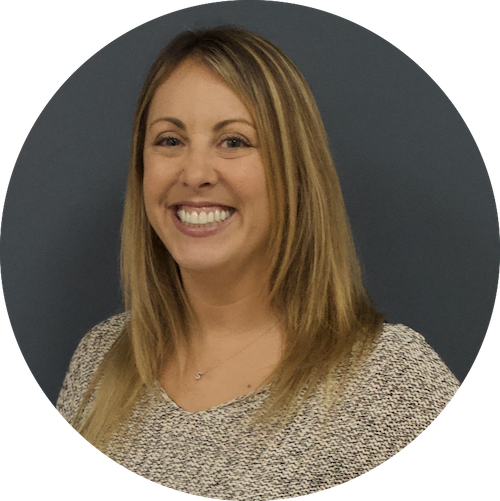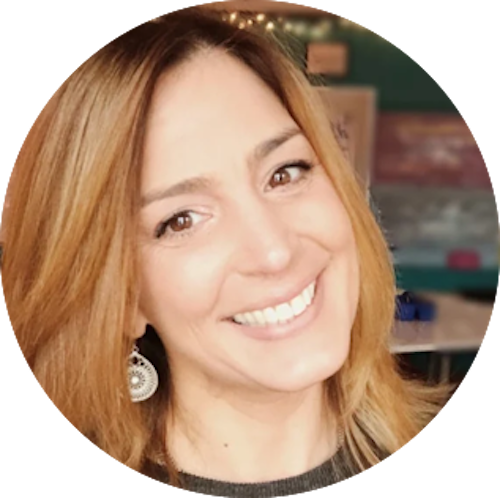
Read on to learn the innovative, bold approaches that three League districts, Mineola Public Schools (New York), Franklin West Supervisory Union (Vermont), and Cajon Valley Union School District (California), are using to fundamentally transform teaching and learning in order to better prepare students for the future.
At Mineola High School in Long Island, New York, Synergy (Mineola Public Schools) is “where anybody can come to dabble and explore what they want to do for the rest of their life without the typical constraints of a 42-minute bell schedule,” explained Suzy Moeller, a licensed clinical social worker at Mineola High School. Through a structured but flexible mix of teacher-led workshops and seminars, asynchronous independent learning, and tailored career training, students learn at their own pace while exploring passions and skills that will set them up for success in jobs and life beyond school.

Suzy Moeller, Licensed Clinical Social Worker, Mineola High School
For entrepreneurial high schoolers like Becca, the flexibility with time and pacing along with the freedom to pursue multiple interests allows her to thrive. As an early adopter of Synergy, she’s worked with school leaders to shape what is possible for herself and her peers through this innovative and highly customizable model of learning. Along with learning traditional high school subjects, for example, she’s also learned how to run and operate a business, leading the charge for planning and opening a fully-functioning cafe on school grounds.
Like most people, however, Becca is not only interested in one thing. She also wants to learn about mental and physical health, and is thinking about becoming a social worker. At Synergy, 11th and 12th graders are able to get EMT (emergency medical technician) certification through a healthcare track, which they can readily use upon graduating.

Jennifer Maichin, Assistant Principal, Mineola High School
“Becca said, ‘I want to do that too,’” explained Jennifer Maichin, assistant principal. “Because of this school model, we can say, ‘Okay, do that too.’”
All students are encouraged to pursue their individual interests. If they give a well-reasoned pitch about how it aligns with their learning goals, the school makes it work. By removing barriers of time, place, and pace, they are able to offer the robust, hands-on learning opportunities that are otherwise not available in a traditionally-structured school day.
Beyond industry certifications and career experience and training, the educators at Synergy have a deeper goal in mind: “We want to develop our students to be independent, flexible thinkers who can navigate challenges, make choices, and learn from those choices,” Maichin said.
In many traditional school systems, due to what is typically emphasized, measured, and rewarded, students often think that the point of school is to get good grades. League districts are at the forefront of trying to change this.
In Vermont for example, the state passed Act 77 in 2013, an education reform law requiring schools to provide flexible pathways of academic and experiential learning opportunities for students, including articulating clear ways to assess competency-based learning.
At Bellows Free Academy (BFA) Fairfax High School (Franklin West Supervisory Union), under the bold leadership of former superintendent Ned Kirsch, they decided that the old way of doing things was not working for students. Getting rid of traditional letter grades, they built a new system where students earn scores based on attainment of standards-based proficiencies.

Jensen Welch, Teaching and Learning Coach, BFA Fairfax High School
“It’s that shift from ‘I got a 90 or 85’ to ‘what am I learning and why?’” said Jensen Welch, longtime educator and current teaching and learning coach at BFA Fairfax High School.
“Rather than just memorizing dates and what happened during World War II, we’ll say, ‘Thinking like a historian or social scientist, how do I look at past events in history and apply them to the future, or to current events? And how does that connect to the skills of citizenship?’”
Similarly, ELA teachers are able to offer creative, interest-based courses while still covering the foundations of reading and writing, and students can also learn career and college writing.
Since implementing this proficiency-oriented learning approach, one of the big shifts Welch has seen is that students have stopped asking about letter grades. It’s now a conversation around “what the actual skill or concept is, versus just trying to grab points,” she said.
Beyond subject matter proficiencies, the school also focuses on building and celebrating transferable skills, including communication, self-direction, integrated thinking, and responsible citizenship—critical skills that will serve students well as they become adults in an increasingly complex, rapidly evolving world.
“How can we match our students’ needs, desires, and dreams to what the future of industry and the future of education is asking for?” said Nerel Winter, executive director and CEO of Bostonia Global, a preschool to 12th grade charter school in Cajon Valley Union School District (California).

Nerel Winter, Executive Director and CEO, Bostonia Global
This question is at the core of cutting-edge efforts across the district to fundamentally shift the focus of schooling from test scores to a shared mission of “happy kids, in healthy relationships, on a path to gainful employment.” Since 2016, the district has put this into action through World of Work, an innovative and comprehensive K-12 career development and assessment curriculum and framework that “uses an approach to understanding self, understanding future self, understanding identity, understanding the context of self, and then understanding the world of work,” explained Winter.
Through this framework, students cultivate a deep and nuanced understanding of their personal strengths, interests, and values and how it connects to work. With consistent mentorship and exposure to multiple exciting careers, students are set on pathways to success once they move beyond school.
“When you’re trying to bridge between what happens in the education sector and the future self, you have to allow students to start learning how to use their voice and bring their voice from within them out into the world,” explained Winter. “And so we do tremendous work around this idea of presentation literacy too.” Students regularly have the opportunity to prepare and present TedX talks, for example.
Whether on a stage or in everyday life, the beauty of the World of Work model is that every student in the district, from kindergarteners to high schoolers, are able to articulate—using the workplace typologies learned throughout their schooling—who they are and who they want to be.
Interested in learning more about innovative approaches to high school and the League of Innovative Schools?
The League of Innovative Schools is accepting applications for its 2024-25 cohort, now through June 7, 2024. Learn more and apply today!